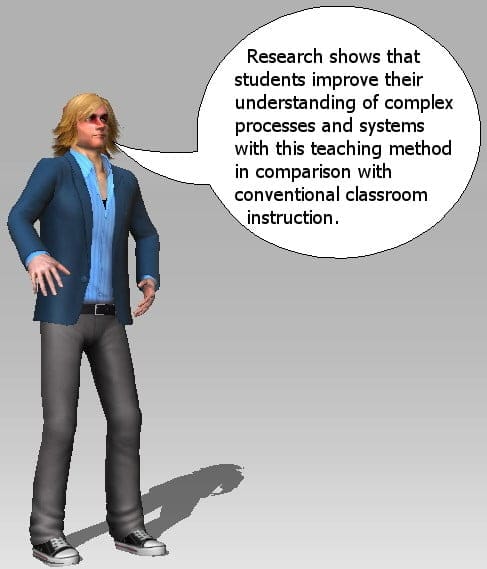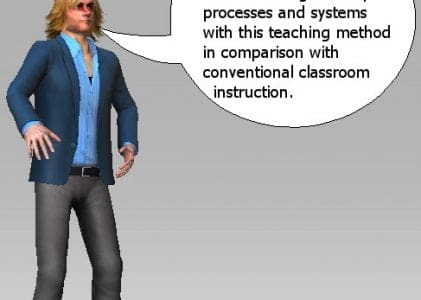 Research from Lund University leads the way
Research from Lund University leads the way
The opposite of interactive learning is passive learning, which involves observing a learning process or just listens to information. With this background the Lund University researchers Daniel Hellström and Ola Johansson, examine methods to make passive learning more interactive. They identify that one significant problem with interactive learning is that it works poorly in larger groups since there is only one channel in a classroom for response. With a computerized response system, an interactive platform, this obstacle could be solved.
Multichannel group-communication
Hellström and Johansson describe the following scenario for an interactive group-dialogue in a classroom:
1st Question
2nd Individual reflection
3rd Individual response / reply via the Interactive System
4th Feedback in the form of a graph with response rates for each response option.
5th Joint discussion between the students with the goal to convince other students that their answer is correct
6th Run the same question again
7th New individual response after the first discussion
8th New feedback using graphs
9th The teacher summarizes the results and displays the correct answer if there is any.
The response-function can also have a time-limited, so that the screen with the question disappears after x number of seconds.
Interactive Learning in a Group in practice
The key to that the learning becomes more effective with this method since it forcing the whole group to become activated. Moreover, it is using a soft approach to force a joint discussion. Research shows that students improve their understanding of complex processes and systems with this teaching method in comparison with conventional classroom instruction. The method also gives the teacher feedback in real time about the students’ individual understanding and also the group’s understanding of what is being discussed. At the same time as the students can compare their skills through the statistics in the response system.
In practice at Lund University
A survey about attitudes to the method among students at LundUniversity shows according to Hellström and Johansson’s own words:
” … an overwhelming positive response. (…) … one may wonder why we have not adopted this teaching technology at Lund University, Faculty of Engineering, earlier.”
Written by LarsGöran Boström©
Source:
Hellström, Daniel och Johansson, Ola Creating an Interactive Learning Environment: Experience of using a Student Response System, Department of Design Sciences, LundUniversity
Opens in a new tab



